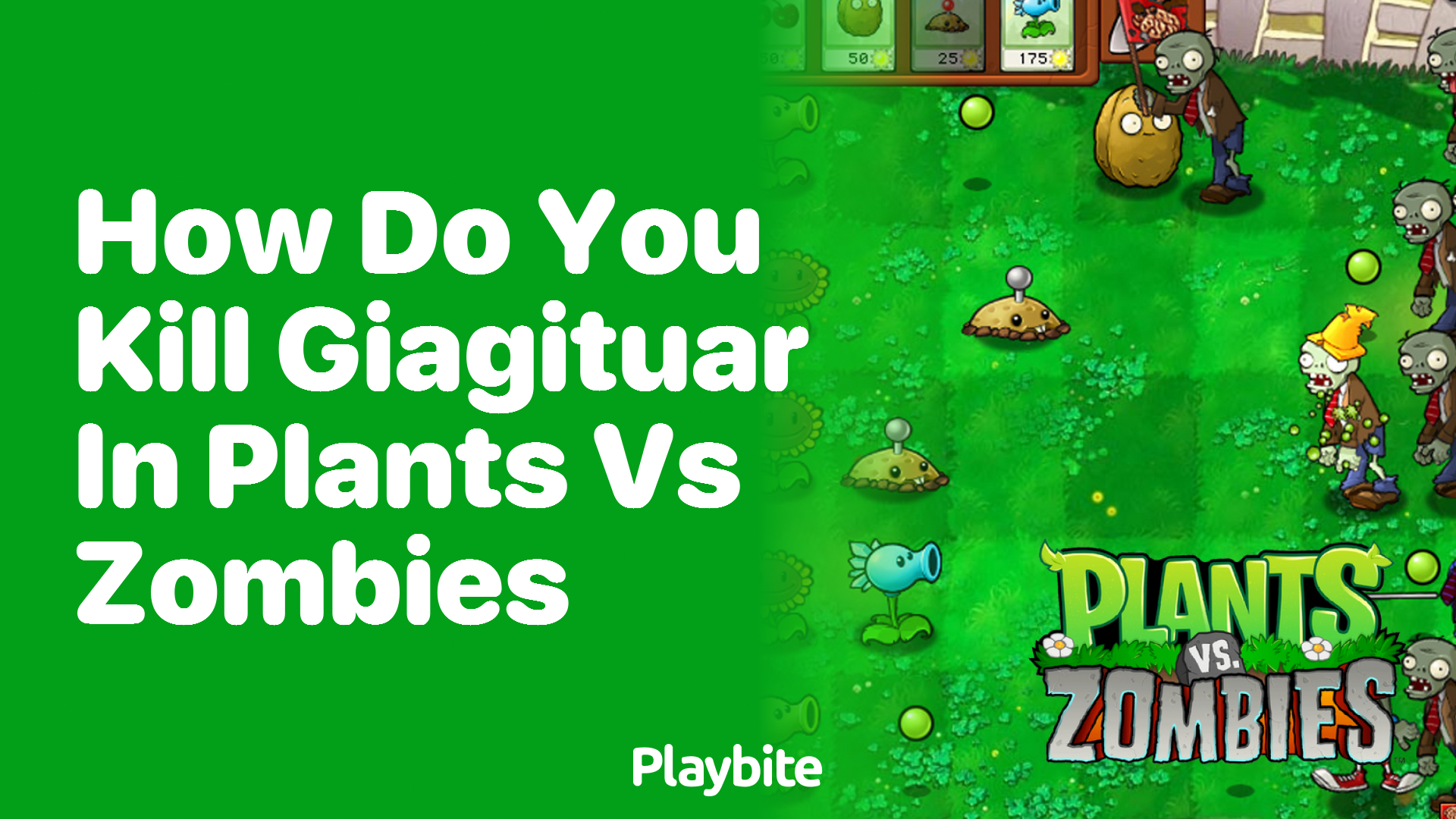Are you tired of dealing with bamboo taking over your garden? If you're wondering how do you kill bamboo plants, you're not alone. Bamboo might look great at first, but its aggressive growth can quickly turn it into a nightmare for any homeowner. But don't worry, we've got you covered. In this guide, we'll walk you through everything you need to know about killing bamboo plants and keeping them under control.
Imagine walking out to your backyard, expecting a serene garden, only to find bamboo popping up everywhere like it's playing hide and seek. Yeah, that’s frustrating, right? Bamboo is one of the fastest-growing plants in the world, and once it gets out of hand, it can be a real pain to manage. But don’t lose hope yet. With the right strategies, you can reclaim your yard and say goodbye to those pesky bamboo shoots.
This guide isn’t just about killing bamboo plants; it’s about understanding why they’re so hard to get rid of and what you can do to stop them from coming back. So, grab a cup of coffee, sit back, and let’s dive into the world of bamboo control. By the end of this, you’ll be an expert at tackling this green menace!
- Renee Zellweger A Journey Through Stardom And Timeless Talent
- Ultimate Break Your Ultimate Guide To Recharging And Relaxing
Understanding Bamboo: The Good, the Bad, and the Ugly
Before we dive into how do you kill bamboo plants, it’s important to understand what makes bamboo so tricky to manage. Bamboo is a type of grass, and like most grasses, it loves to spread. But unlike your average lawn grass, bamboo can grow up to 3 feet in a single day! That’s right—three feet in just 24 hours. Now you know why it’s such a popular choice for privacy screens and landscaping.
Why Bamboo is So Hard to Kill
Here’s the deal: bamboo doesn’t just grow above ground. Beneath the surface, it has an extensive network of rhizomes—underground stems that spread out and send up new shoots. These rhizomes are what make bamboo so resilient. Even if you cut down the visible part of the plant, the rhizomes can continue to grow and produce new shoots. It’s like playing whack-a-mole, except instead of moles, it’s bamboo.
Another reason bamboo is so hard to kill is that it’s incredibly adaptable. Whether you live in a tropical climate or a colder region, there’s probably a type of bamboo that can thrive there. This adaptability makes it a popular choice for gardeners, but it also means it can invade areas where it’s not wanted.
- When Nba Was Created The Untold Story Of Basketballs Greatest League
- Emilys Friends A Deep Dive Into Her Inner Circle And Their Impact
Types of Bamboo: Running vs. Clumping
Not all bamboo is created equal. There are two main types of bamboo: running bamboo and clumping bamboo. Running bamboo is the type that gives gardeners nightmares. It spreads aggressively through underground rhizomes and can quickly take over a yard. Clumping bamboo, on the other hand, stays in one place and doesn’t spread as much. If you’re dealing with running bamboo, you’ll need a more aggressive approach to get rid of it.
How Do You Kill Bamboo Plants? Step-by-Step Guide
Now that you know what you’re up against, let’s talk about how to kill bamboo plants. There are several methods you can use, depending on how much time and effort you’re willing to put in. Here’s a step-by-step guide to help you get started:
Cutting Down Bamboo Shoots
The first step in killing bamboo is cutting down the visible shoots. Use a sharp pair of pruners or a saw to cut the shoots as close to the ground as possible. This won’t kill the bamboo outright, but it will weaken it over time. Think of it like cutting off the head of a hydra—it’ll grow back, but it’ll be weaker each time.
Using Herbicides
If cutting alone isn’t enough, you might need to bring out the big guns: herbicides. Glyphosate-based herbicides are effective against bamboo, but you’ll need to apply them carefully. After cutting the shoots, paint the herbicide directly onto the cut surface. This allows the chemical to travel down into the rhizomes and kill the plant from the inside out. Be sure to follow the instructions on the label carefully to avoid harming other plants in your garden.
Digging Out the Rhizomes
For those who want a more hands-on approach, digging out the rhizomes is a great option. This method requires a lot of effort, but it’s one of the most effective ways to get rid of bamboo for good. Use a shovel to dig around the base of the plant and carefully remove all the rhizomes. Make sure to get every last piece, because even a small fragment can grow into a new plant.
Preventing Bamboo from Coming Back
Once you’ve successfully killed your bamboo plants, the last thing you want is for them to come back. Here are a few tips to help prevent bamboo from reinvading your yard:
Install a Bamboo Barrier
If you’re dealing with running bamboo, installing a bamboo barrier is a great way to keep it under control. A bamboo barrier is a plastic or metal sheet that you bury around the perimeter of your bamboo patch. This prevents the rhizomes from spreading beyond the designated area. Be sure to bury the barrier at least 30 inches deep and leave a few inches above ground to stop the rhizomes from jumping over.
Mulch and Monitor
After removing bamboo, it’s important to keep an eye on the area to make sure it doesn’t come back. Mulch the area with a thick layer of organic material to discourage new shoots from sprouting. Keep an eye out for any new growth and remove it immediately before it has a chance to establish itself.
Alternative Methods for Killing Bamboo
If you’re not a fan of herbicides or digging, there are a few alternative methods you can try:
- Solarization: Cover the bamboo patch with a thick layer of plastic to block sunlight and heat. This can kill the bamboo over time, but it may take several months.
- Boiling Water: Pour boiling water over the bamboo shoots to scorch them. This method is eco-friendly, but it may take multiple applications to be effective.
- Vinegar: Spray white vinegar directly onto the bamboo leaves. The acidity will dry out the plant, but it may take several weeks to see results.
Common Mistakes When Killing Bamboo
Even the best-laid plans can go awry if you’re not careful. Here are a few common mistakes to avoid when trying to kill bamboo:
Not Cutting Close Enough to the Ground
If you leave even a small portion of the shoot above ground, it can continue to grow. Always cut the shoots as close to the ground as possible to ensure maximum effectiveness.
Using the Wrong Herbicide
Not all herbicides are created equal. Make sure you’re using a glyphosate-based herbicide specifically designed for bamboo. Other types of herbicides may not be effective or could harm surrounding plants.
Forgetting to Remove Rhizomes
Even if you cut down all the visible shoots, the rhizomes can still grow new plants. Don’t skip this step if you want to get rid of bamboo for good.
How Long Does It Take to Kill Bamboo?
The time it takes to kill bamboo depends on the method you use and the size of the infestation. Cutting and herbicides can take several weeks to months, while digging out the rhizomes may take a few days of hard work. Solarization and vinegar methods may take several months to see results. Patience is key when dealing with bamboo.
Tips for Speeding Up the Process
Here are a few tips to help speed up the bamboo-killing process:
- Cut the shoots frequently to weaken the plant.
- Apply herbicide immediately after cutting for maximum absorption.
- Use a combination of methods for the best results.
Can You Compost Dead Bamboo?
Once you’ve successfully killed your bamboo plants, you might be wondering what to do with all the dead material. The good news is that you can compost dead bamboo, but there are a few things to keep in mind:
Chop It Up
Bamboo is tough, so it’s important to chop it into small pieces before adding it to your compost pile. This will help it break down faster and prevent it from taking over your compost.
Monitor for Regrowth
Even after composting, there’s a chance that rhizome fragments could survive and sprout new plants. Keep an eye on your compost pile and remove any new growth immediately.
Conclusion: Say Goodbye to Bamboo for Good
Now that you know how do you kill bamboo plants, you’re ready to take back control of your yard. Whether you choose to cut, dig, or use herbicides, there’s a method out there that will work for you. Remember to be patient and persistent, and don’t forget to take steps to prevent bamboo from coming back. By following the tips in this guide, you’ll be able to enjoy a bamboo-free garden in no time.
So, what are you waiting for? Grab your tools, roll up your sleeves, and get to work. And when you’re done, don’t forget to share your success story in the comments below. Who knows? You might inspire someone else to take on their own bamboo battle!
Table of Contents
- Understanding Bamboo
- Why Bamboo is So Hard to Kill
- Types of Bamboo
- How Do You Kill Bamboo Plants? Step-by-Step Guide
- Cutting Down Bamboo Shoots
- Using Herbicides
- Digging Out the Rhizomes
- Preventing Bamboo from Coming Back
- Install a Bamboo Barrier
- Mulch and Monitor
- Alternative Methods for Killing Bamboo
- Common Mistakes When Killing Bamboo
- How Long Does It Take to Kill Bamboo?
- Can You Compost Dead Bamboo?



Detail Author:
- Name : Maurice Goldner Jr.
- Username : mkunde
- Email : halvorson.emely@kunde.biz
- Birthdate : 2000-12-23
- Address : 269 Marge Ville New Eunice, NC 07320
- Phone : +1-283-323-7294
- Company : Sanford, Armstrong and Prosacco
- Job : Historian
- Bio : Voluptas voluptatum quis laudantium. Non vel nostrum in at quod qui. Possimus porro et aut ad doloribus. Repudiandae ut praesentium quos ullam iste officiis et.
Socials
linkedin:
- url : https://linkedin.com/in/rschulist
- username : rschulist
- bio : Vitae eligendi sunt provident nihil.
- followers : 6668
- following : 1238
instagram:
- url : https://instagram.com/schulist2014
- username : schulist2014
- bio : Minus aut ea aut officiis consequuntur id. Ullam qui veniam repudiandae minima.
- followers : 1940
- following : 2508
tiktok:
- url : https://tiktok.com/@robbie.schulist
- username : robbie.schulist
- bio : Qui illum possimus quaerat odio fuga et nobis.
- followers : 153
- following : 2337